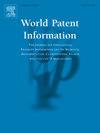Expanding the concept of drug lifecycle management to chimeric antigen receptor T-cell products through product-patent linkage analysis
IF 2.2
Q2 INFORMATION SCIENCE & LIBRARY SCIENCE
引用次数: 0
Abstract
Chimeric antigen receptor T (CAR-T) cell therapies have been actively developed, and five CAR-T products have been commercialized in Japan. Due to the ongoing development of CAR-T cell therapies, including next-generation variants, the patent landscape is expected to become increasingly complex. Therefore, understanding patent strategies for each CAR-T product is essential.
In the pharmaceutical industry, lifecycle management (LCM) centered on regulatory and patent protection has been implemented to maximize product value. While studies have reported CAR-T patents through patent landscape analysis to gain insights into the overall CAR-T technology, there is a lack of research on product-related patents for CAR-T products. As a result, the foundational knowledge regarding the LCM of CAR-T products remains unclear.
Therefore, we identified product-patent linkages for CAR-T products in the Japanese market by combining patent term extension (PTE) data with publicly available data and assessed the applicability of drug LCM to CAR-T products. Our identification of precise product-patent linkages revealed that all CAR-T products met the criteria for drug LCM. This study suggests that LCM activities can be implemented for CAR-T products and that the concept of drug LCM can be expanded to CAR-T products.
通过产品-专利连锁分析,将药物生命周期管理的概念扩展到嵌合抗原受体t细胞产品
嵌合抗原受体T (CAR-T)细胞疗法积极发展,在日本已经有5种CAR-T产品商业化。由于CAR-T细胞疗法(包括下一代变体)的持续发展,预计专利前景将变得越来越复杂。因此,了解每个CAR-T产品的专利策略至关重要。在制药行业,以法规和专利保护为中心的生命周期管理(LCM)已经实施,以最大化产品价值。虽然有研究通过专利景观分析来报道CAR-T专利,以了解整体CAR-T技术,但缺乏对CAR-T产品相关专利的研究。因此,关于CAR-T产品LCM的基础知识仍然不清楚。因此,我们通过将专利期限延长(PTE)数据与公开数据相结合,确定了日本市场CAR-T产品的产品-专利联系,并评估了药物LCM对CAR-T产品的适用性。我们对产品-专利联系的精确鉴定表明,所有CAR-T产品都符合药物LCM的标准。本研究表明,LCM活性可用于CAR-T产品,药物LCM的概念可扩展到CAR-T产品。
本文章由计算机程序翻译,如有差异,请以英文原文为准。
求助全文
约1分钟内获得全文
求助全文
来源期刊

World Patent Information
INFORMATION SCIENCE & LIBRARY SCIENCE-
CiteScore
3.50
自引率
18.50%
发文量
40
期刊介绍:
The aim of World Patent Information is to provide a worldwide forum for the exchange of information between people working professionally in the field of Industrial Property information and documentation and to promote the widest possible use of the associated literature. Regular features include: papers concerned with all aspects of Industrial Property information and documentation; new regulations pertinent to Industrial Property information and documentation; short reports on relevant meetings and conferences; bibliographies, together with book and literature reviews.
 求助内容:
求助内容: 应助结果提醒方式:
应助结果提醒方式:


